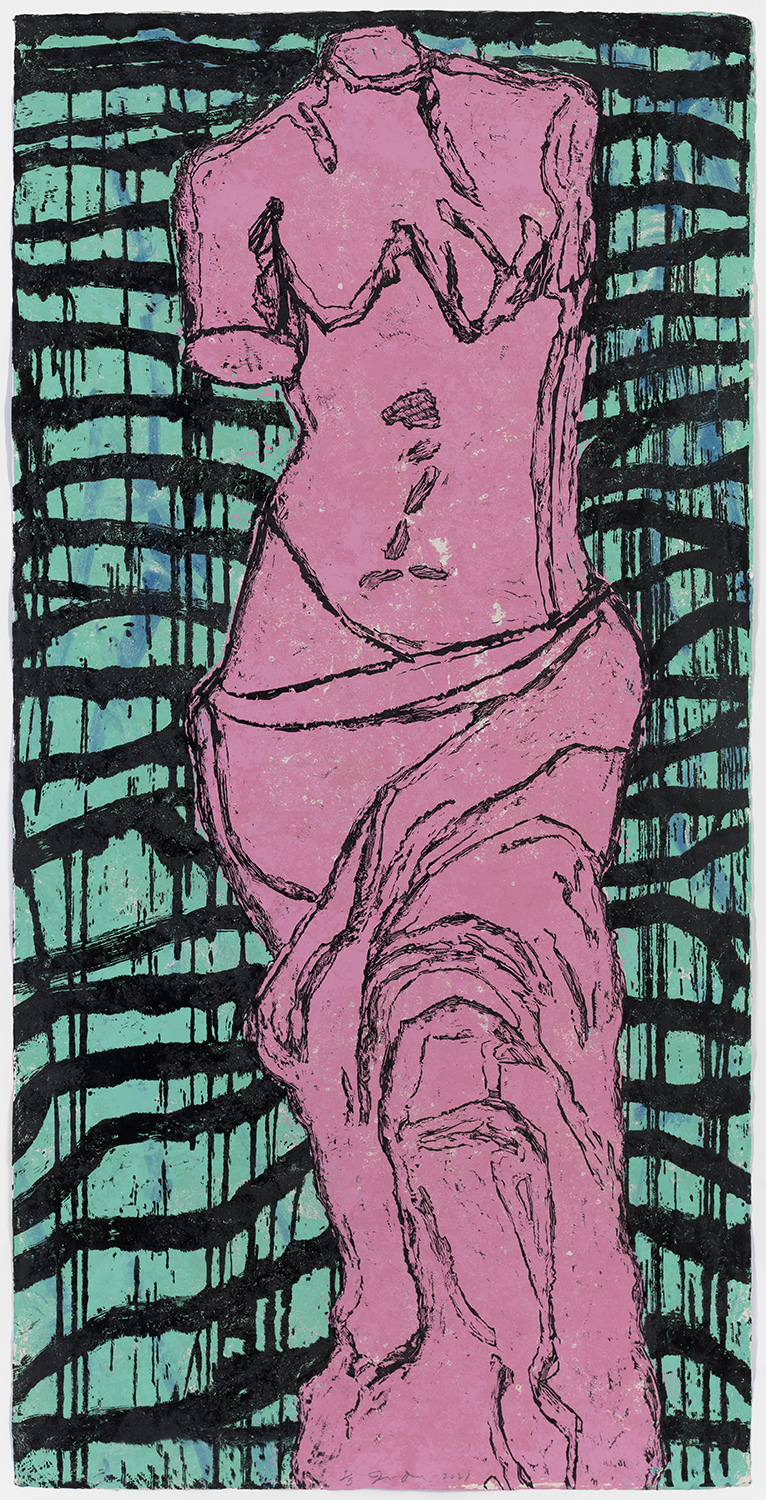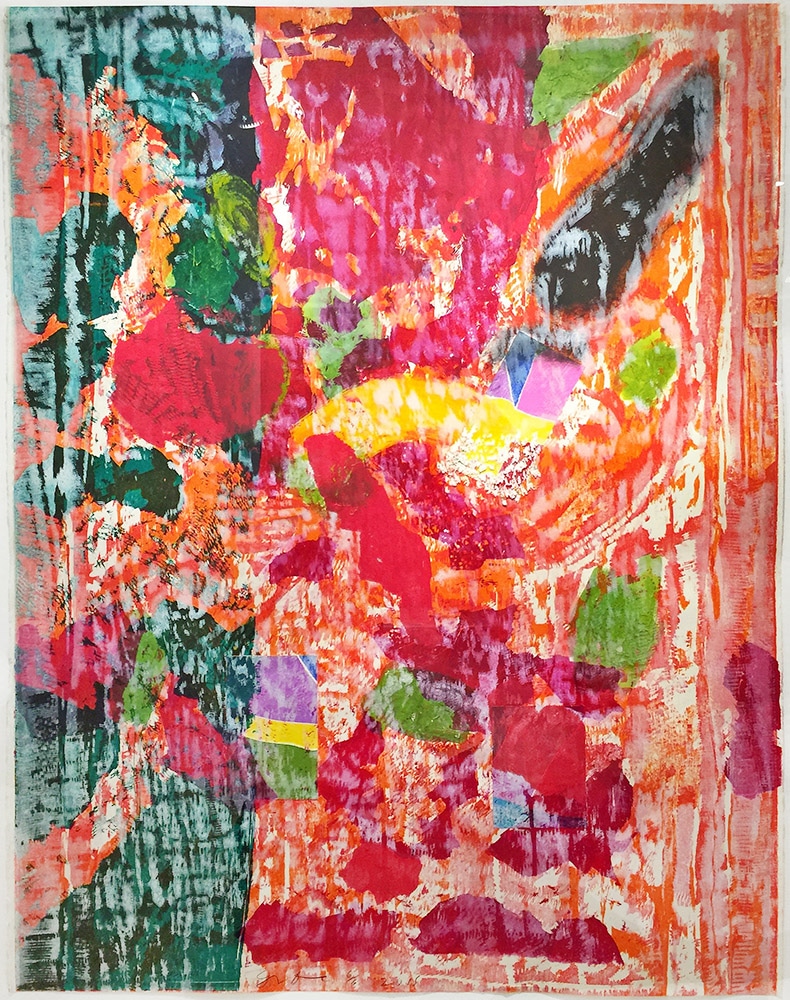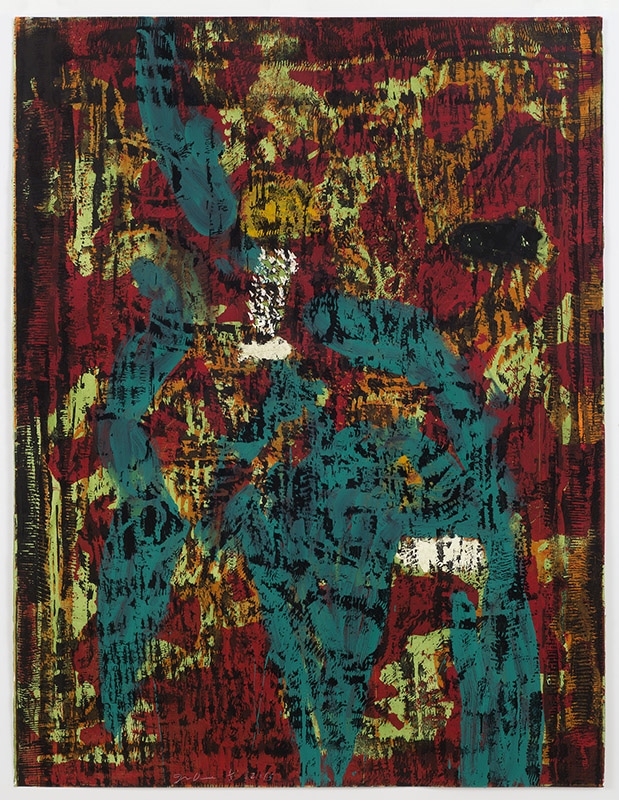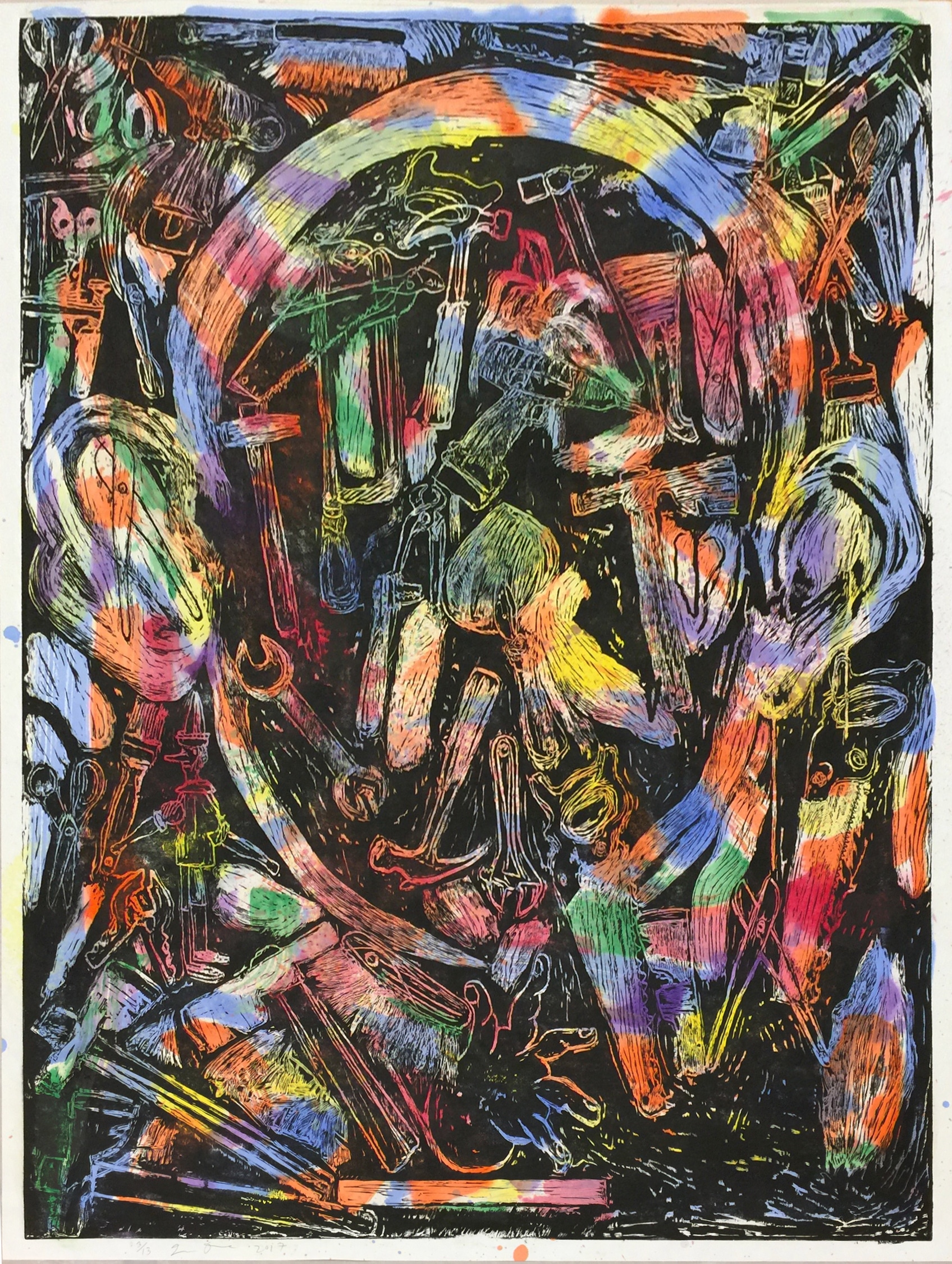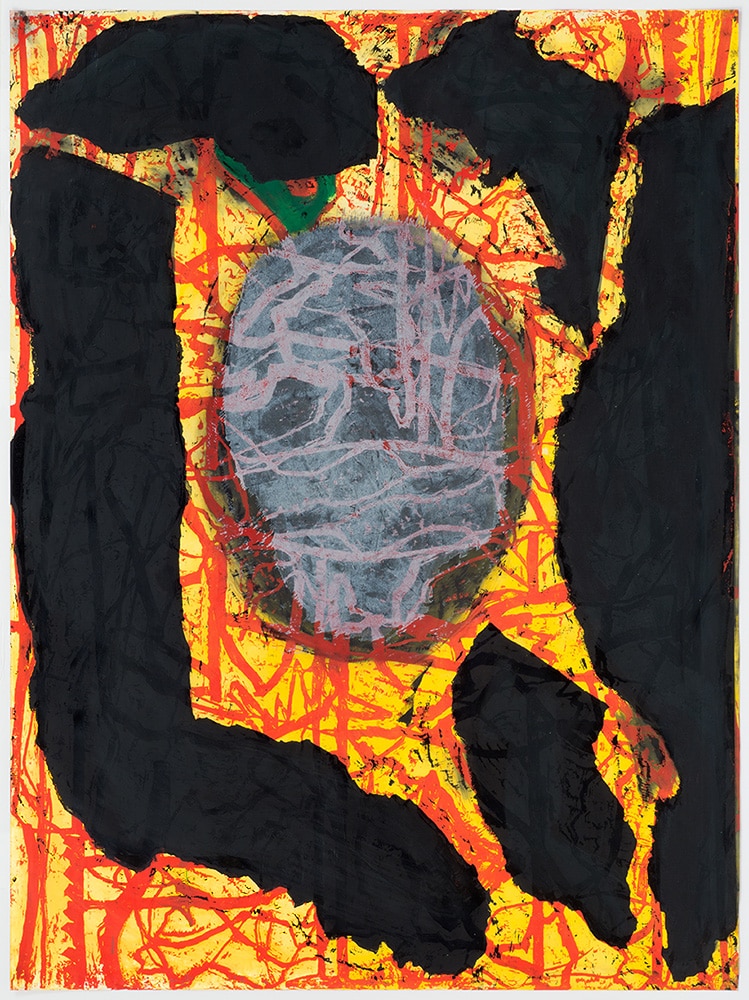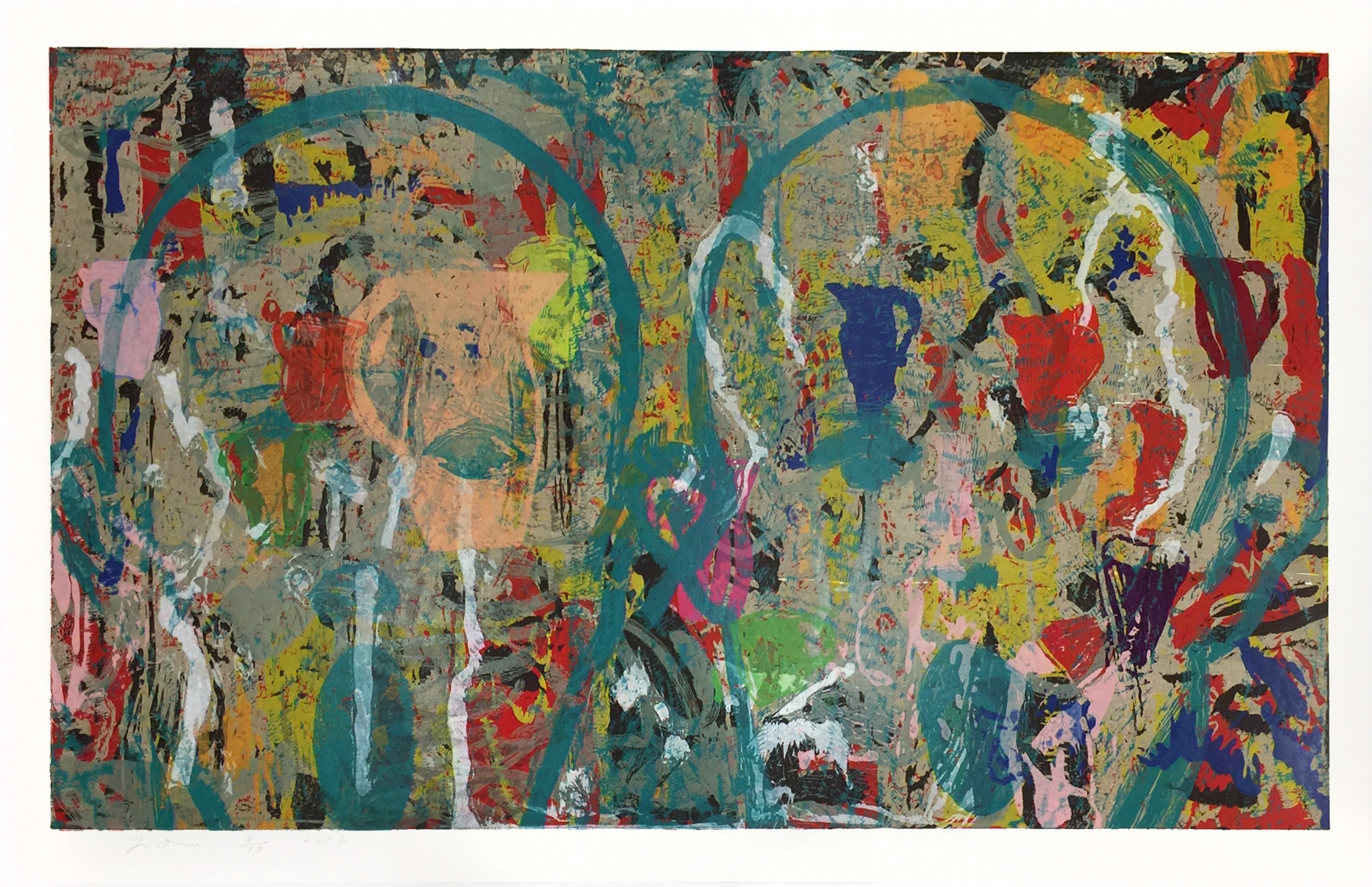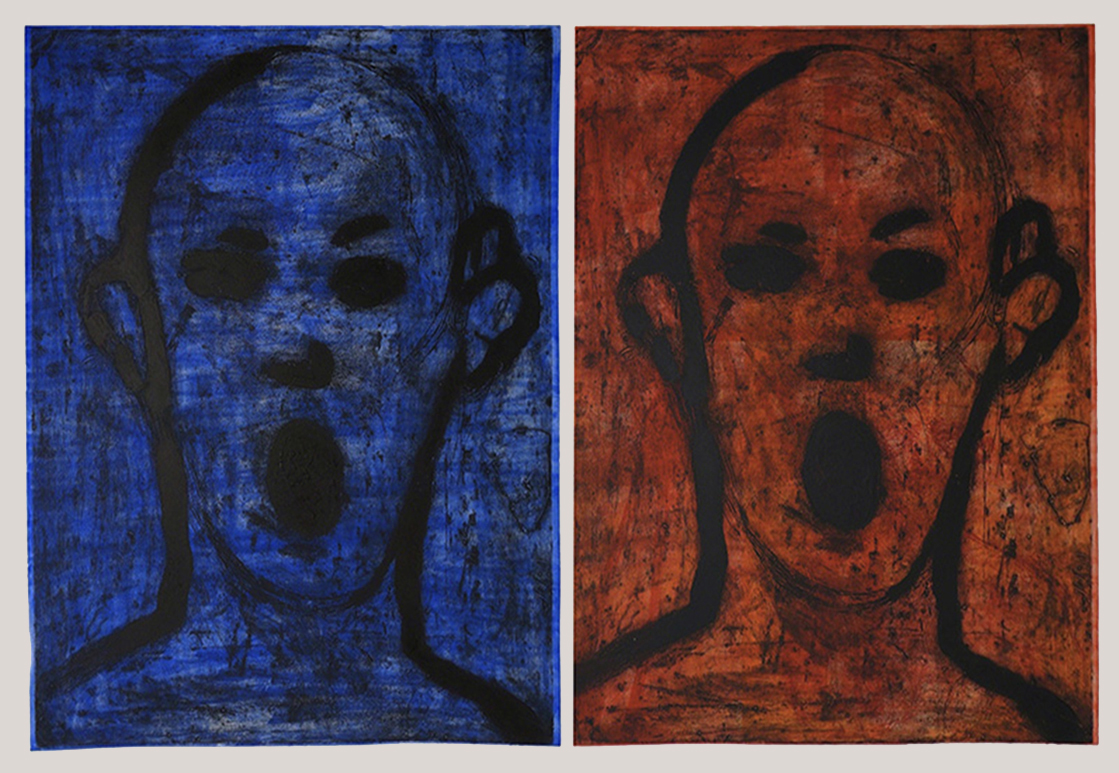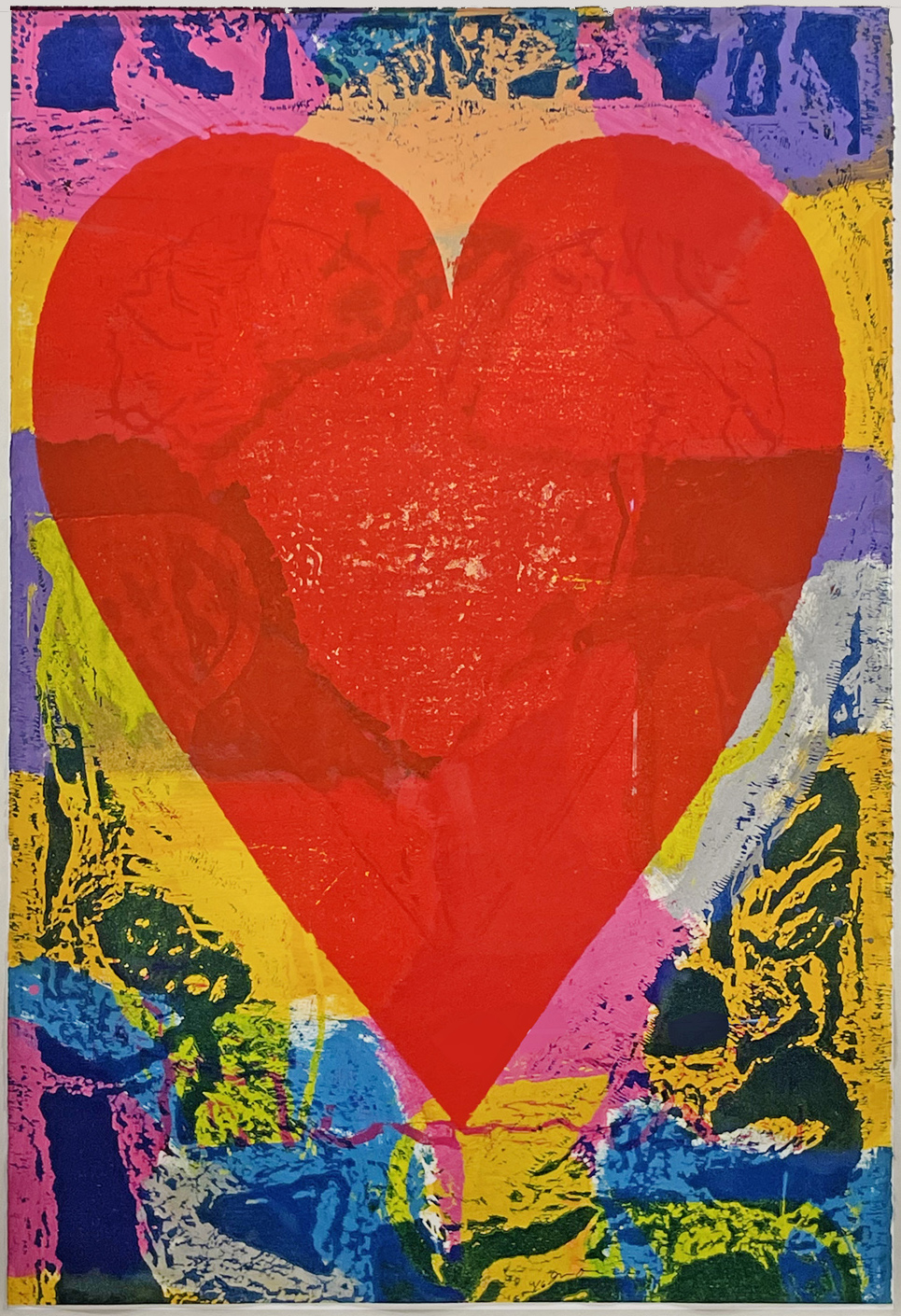JIM DINE PRINTS
Jim Dine
Pink Venus, Sydney Close
2021
Woodcut on handmade Mexican paper
with hand-painted background
94″ x 46-7/8″ (239 x 119 cm)
Edition of 5 (+ 1 AP)
Jim Dine Prints are known for their strong, graphic style, bright colors, and straightforward, popular imagery. This aesthetic is apparent in all of his work, including his iconic prints.
By singling out simple shapes and objects and depicting them over and over, Dine suggests that these are important subjects for artistic study. The catalogue of Jim Dine Prints includes many depictions of hearts, tools and bathrobes because these are elements that have special meaning in his life.
Dine frequently revisits certain powerful symbols and objects in endeavoring to create a deeper interpretation of the significance he attaches to them. He views this work as an examination of the impact of these archetypal symbols, rather than merely a celebration of them.
One autobiographical reference in Dine’s work is the focus on ordinary tools which appear in many of his works. During his childhood, Dine frequently visited his grandfather’s hardware store where he would amuse himself for hours playing with the tools and implements that were part of the store’s inventory. From these experiences came his fascination with tools as an extension of the artist’s hand and as a worthy subject of exploration.
The bathrobe is also representative of personal identity in Dine’s work. Dine explains that he was searching for a way to create self-portraits when he happened upon an ad for bathrobes in a magazine. He instantly recognized his own shape in the “uninhabited” bathrobe and it became a metaphorical representation of the artist himself and one of the most popular icons in Dine’s work.
Another major recurring element in Dine’s work is the heart. Through the heart motif, Dine explores many themes as well as countless combinations of media, color, form and texture.
Dine once said of his heart iconography: “It’s a landscape for everything. It’s like Indian classical music — based on something very simple but building to a complicated structure. Within that you can do anything in the world. And that’s how I feel about my hearts.” (Milwaukee Journal Sentinel).
Jim Dine Prints are produced using a variety of techniques. Inspired by his childhood workman’s background and the tools of his youth, Dine has experimented with many different forms of printmaking from woodcut, drawing with acid on copper, using grease on litho stones and drypoint—scratching directly onto a metal plate. Dine says he also enjoys the social nature of print-making because a team of artisans is required to complete the work whereas painting is a solitary pursuit.
Jim Dine made his first print at the age of seventeen and has continued to produce amazing work throughout his artistic life. One of the ideas he loves about printmaking is the fact that prints are produced in multiples allowing more collectors to enjoy his work. We hope you enjoy these Jim Dine Prints as well
VIEW ALL AVAILABLE ARTWORK BY JIM DINE:
Jim Dine
The Packing of a Sea of Glass
2015
Woodcut, three hand-applied collaged
elements, power-tool abrasions and
lacerations, and hand-painted
acrylic on Hahnemuhle 350gm
Off White paper
63″ x 49″ (160 x 124.5 cm)
Edition of 6
Jim Dine
The Bees and their Merriment
2017
Linocut on monotype Gokung Korean paper
72-3/4″ x 51″ (184.6 x 129.4 cm)
Edition of 13
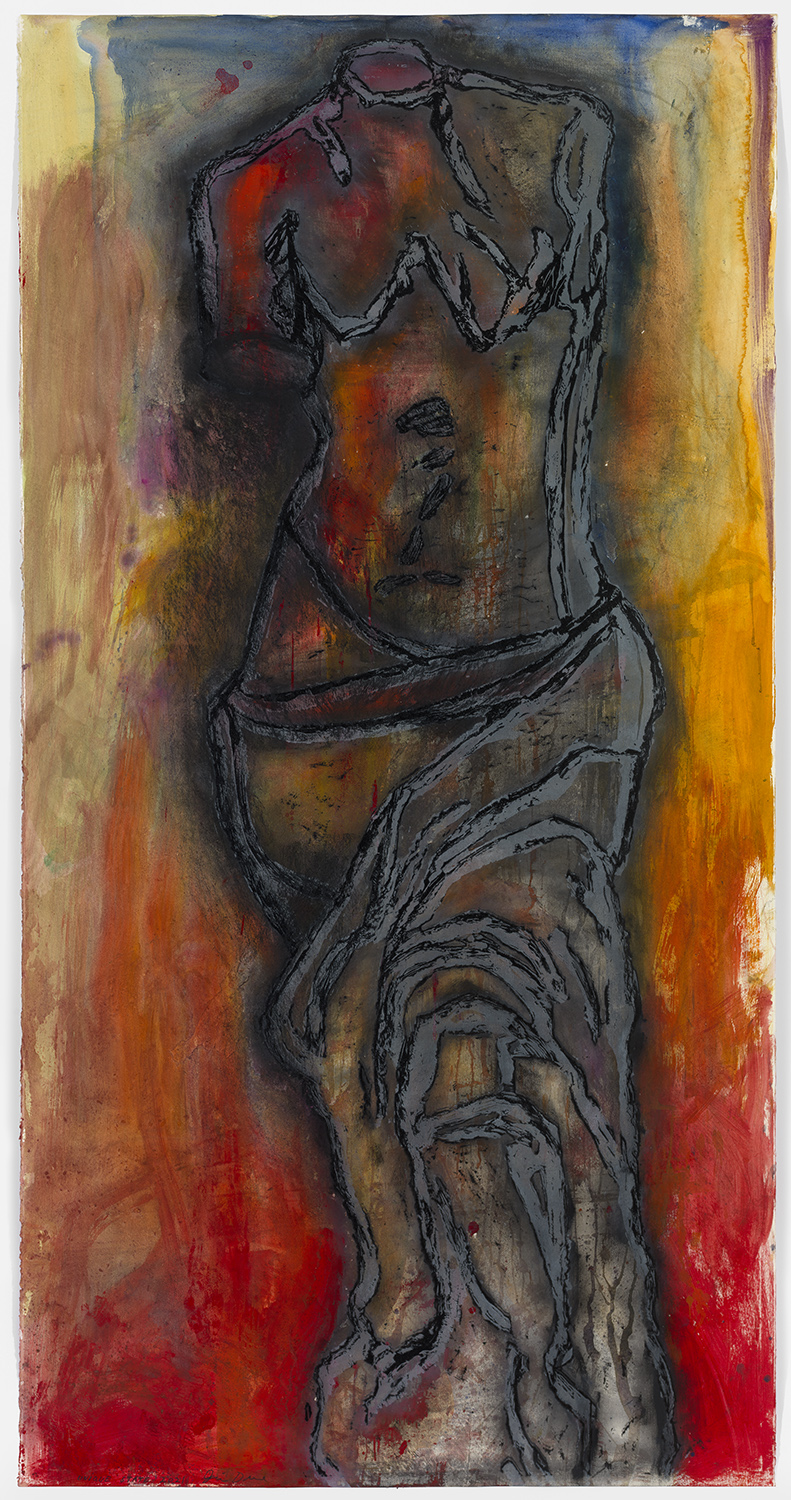
Jim Dine
Venus by my hand (and watercolor) #3
2021
Woodcut on with extensive on
Hahnemule Paper 350 gsm
96-1/2′ x 49-1/4″ (245 x 125 cm)
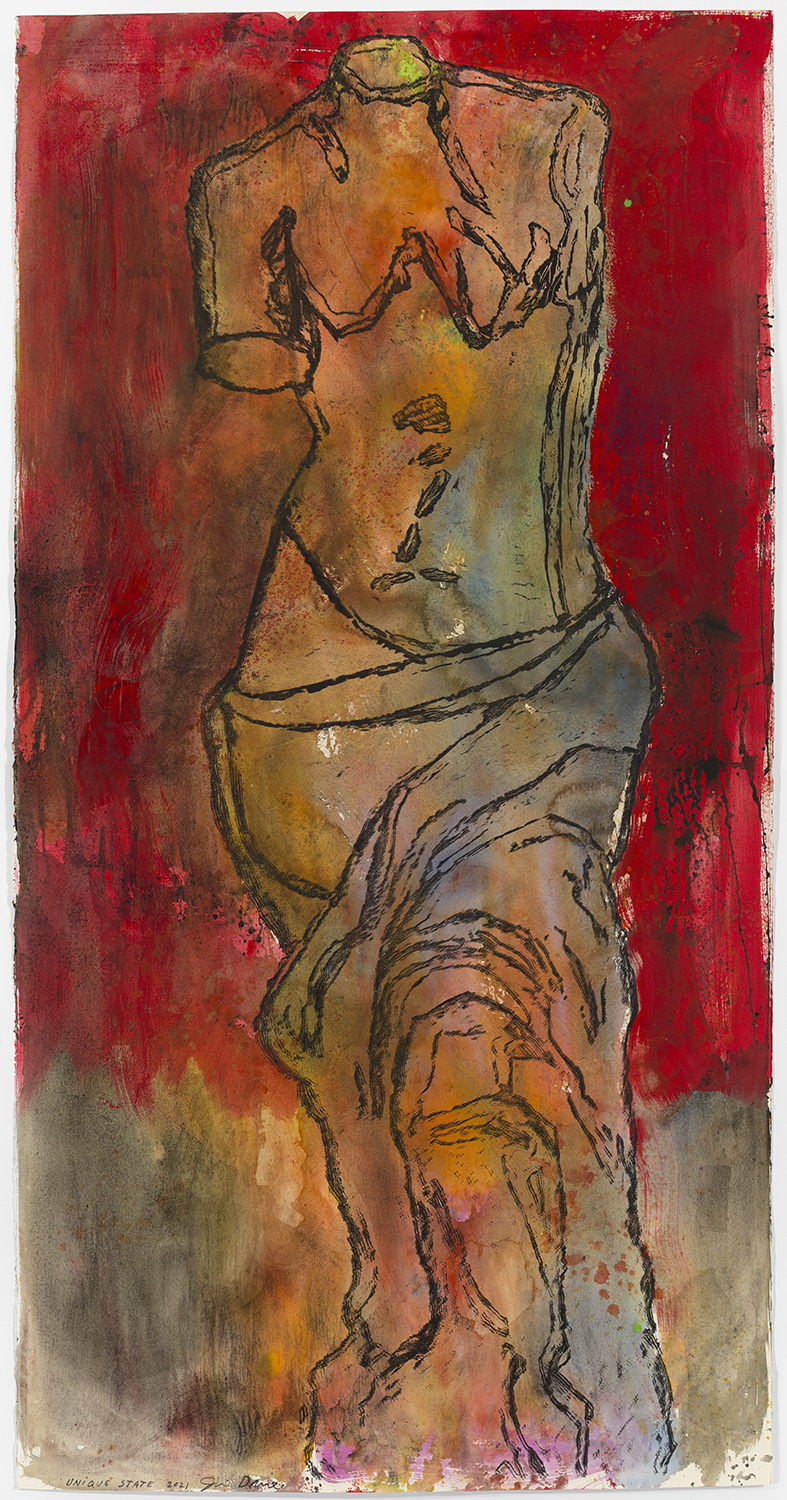
Jim Dine
Venus by my hand (and watercolor) #5
2021
Woodcut on with extensive on
Hahnemule Paper 350 gsm
96-1/2′ x 49-1/4″ (245 x 125 cm)
Jim Dine
Painters and Poets in the French
2017
28 color woodcut from 15 blocks
on Fabriano Artistico 640 gsm paper
51-1/4″ x 83-1/2″ (130.4 x 212 cm)
Edition of 13
Jim Dine
Two Poets Singing Beautifully
2016
Etching and collograph
on Bright White Hahnemuhle paper
57-1/2″ x 84-1/2″ (146 x 214.6 cm)
Edition of 12

